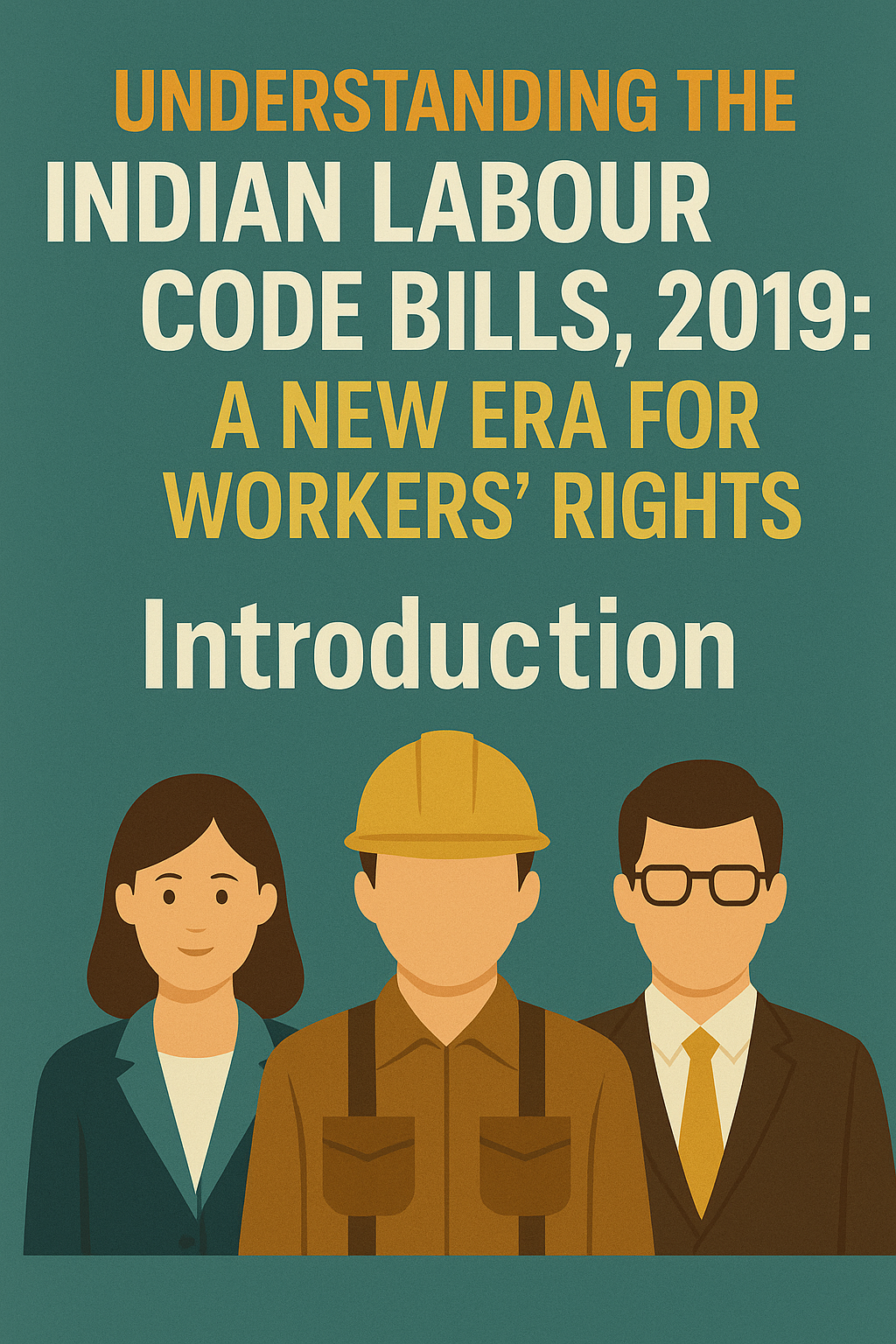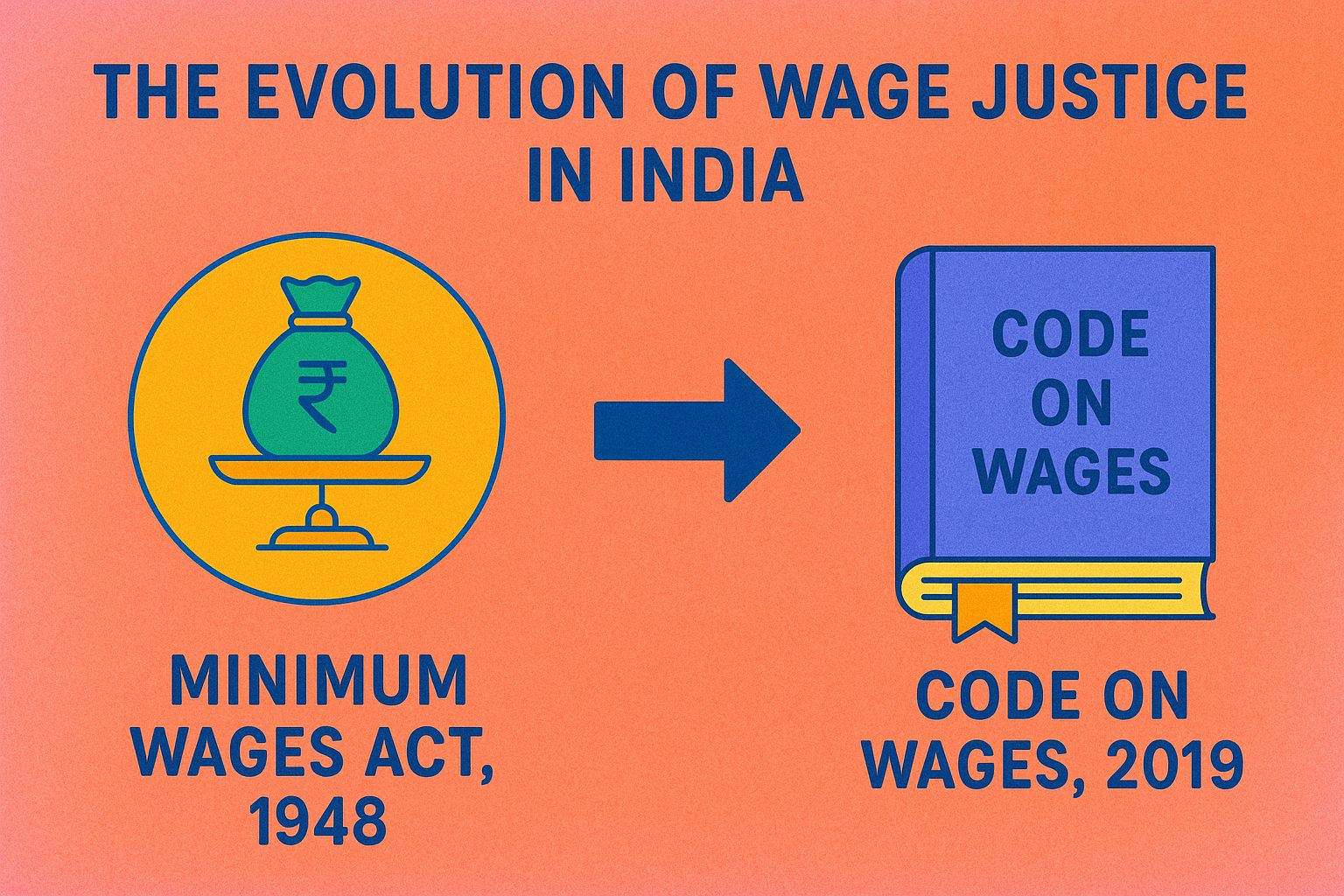Introduction
Labour laws in India have historically been known for their complexity and fragmentation. With over 40 different central laws governing various aspects of employment, businesses and workers often found themselves tangled in confusing and outdated regulations. To address these challenges and to create a more streamlined, efficient, and transparent system, the Indian government introduced the Indian Labour Code Bills, 2019. These reforms represent a significant move towards consolidating and modernizing the country’s labour law framework.
In this blog, we dive into the details of the Labour Code Bills, their objectives, key features, impact, and criticisms.
Background
The need to reform India’s labour laws had been discussed for decades. The existing framework, largely shaped during the colonial era, had become outdated in a rapidly globalizing and digital economy. It discouraged investments and created compliance burdens for industries while failing to adequately protect many categories of workers, especially in the informal sector.
In 2019, the government introduced four major labour code bills:
1. The Code on Wages, 2019
2. The Industrial Relations Code, 2019
3. The Occupational Safety, Health and Working Conditions Code, 2019
4. The Social Security Code, 2019
These four codes consolidate 29 central labour laws into a simplified and uniform framework.
Objectives of the Labour Codes
The primary goals of the Labour Code Bills are:
• Simplification: To consolidate multiple laws into four comprehensive codes.
• Ease of Doing Business: By reducing the compliance burden on businesses.
• Universalization of Labour Rights: Extending labour rights to all categories of workers, including those in the unorganized sector.
• Transparency and Accountability: Digitalization and standardization of procedures.
• Strengthening Worker Protections: By ensuring minimum wages, health, safety, and social security benefits.
Key Features of the Four Labour Codes
1. The Code on Wages, 2019
• Consolidates: Payment of Wages Act, Minimum Wages Act, Payment of Bonus Act, and Equal Remuneration Act.
• Universal Applicability: Covers all employees in organized and unorganized sectors.
• Minimum Wages: A national floor wage will be fixed, below which states cannot set minimum wages.
• Timely Payment: Mandates timely payment of wages without gender discrimination.
• Simplified Definitions: Clear definition of terms like wages, employee, employer, etc.
2. The Industrial Relations Code, 2019
• Consolidates: Trade Unions Act, Industrial Employment (Standing Orders) Act, and Industrial Disputes Act.
• Easier Hiring and Firing: Establishments with up to 300 workers can hire and lay off workers without government approval (previously 100 workers).
• Strikes: Workers must give a 14-day notice before going on strike.
• Recognition of Trade Unions: Provides for the recognition of negotiating unions.
3. The Occupational Safety, Health and Working Conditions Code, 2019
• Consolidates: 13 laws including Factories Act, Mines Act, Dock Workers Act, etc.
• Employee Welfare: Provisions for health, safety, and welfare measures across industries.
• Single License: Introduces a single license for contractors operating in more than one state.
• Women Workers: Allows women to work in all establishments and at night (subject to safety conditions).
4. The Social Security Code, 2019
• Consolidates: Nine laws related to social security including EPF Act, ESI Act, Maternity Benefit Act.
• Universal Social Security: Extends social security benefits to gig workers, platform workers, and unorganized sector workers.
• National Database: Establishment of a national database of workers for better delivery of benefits.
• Contribution Mechanism: Clearly defines the contributions from employers, employees, and government.
Impact of the Labour Codes
On Employers
• Ease of Compliance: A more straightforward, less bureaucratic process.
• Flexibility: Greater ease in managing workforce requirements.
• Single Registration: Unified registration and licensing norms simplify business operations.
On Workers
• Wider Coverage: More workers, including those from the informal sector, are now protected.
• Better Wages and Security: National floor wages and access to social security benefits.
• Health and Safety: Mandatory provisions for worker welfare and safer workplaces.
Criticism and Concerns
While the Labour Codes mark a significant step forward, they have not been without controversy:
• Dilution of Workers’ Rights: Critics argue that easier retrenchment and restrictions on strikes weaken workers’ bargaining power.
• Implementation Challenges: Proper enforcement, especially for gig and informal workers, remains a concern.
• Ambiguity: Certain provisions, like rules regarding fixed-term employment, are vague and could be misused.
• Consultation Deficit: Trade unions and worker organizations have protested that there was insufficient consultation before passing the laws.
The Way Ahead
The Labour Codes are undoubtedly ambitious in their scope. However, their success will depend heavily on how they are implemented at the state level, as labour is a concurrent subject in India’s Constitution. States must frame detailed rules to operationalize these codes, and the Centre must ensure that these rules are worker-friendly and not just pro-employer.
Moreover, building awareness among workers — especially those in unorganized sectors — about their rights under the new codes is crucial. Capacity building, training labour inspectors, and establishing accessible grievance redressalmechanisms will also be key to ensuring that the benefits of the reforms are realized on the ground.
Conclusion
The Indian Labour Code Bills, 2019, represent a bold and necessary reform of India’s outdated labour law framework. By consolidating and modernizing the rules, the government aims to strike a balance between promoting ease of doing business and safeguarding workers’ rights. However, the true test of these reforms will lie in their practical application and the ability of both government and industry to uphold the spirit of fairness and equity envisioned in these laws.
As India marches towards becoming a $5 trillion economy, a modern, inclusive, and efficient labour market will be one of the pillars supporting that growth.
by…..
Harmanjeet Kaur
- Lovely Professional University



